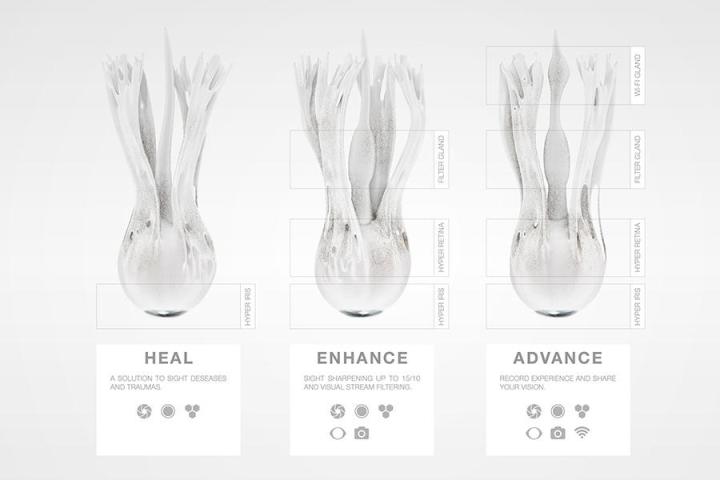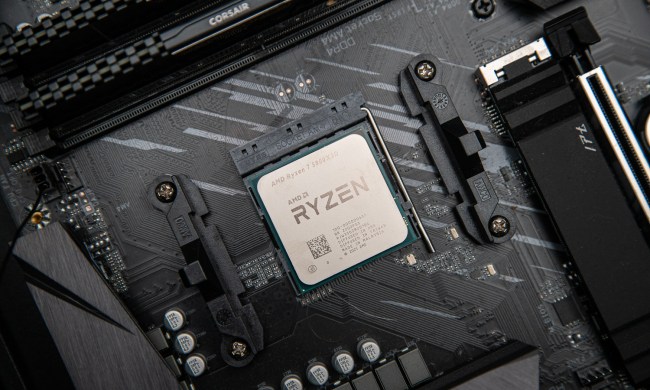
The eyeball concept actually comes in three different flavours. The first would provide the same functionality as our eyes do now and would be the economical version of the trio. The second, slightly more advanced iteration, could provide more advanced focusing capabilities, giving those fitted with the new eye 15/10 vision.
Related: What is 3D printing? A beginner’s guide to the desktop factory
The third version would also be WiFi capable and would have the ability to record what you’re seeing and automatically upload it. To activate some of these functions however, the wearer would need to swallow a pill containing certain enzymes which would then trigger WiFi connectivity or photo mode for a certain period of time, according to Dezeen.
Regardless of which version you used however, MHOX sees the process of ‘implantation as largely the same. Each would involve the removal of the original eyeball, and a piece of organic hardware known as ‘the deck’ would be installed, acting as an interface between the optic nerve and the new eye. The eyeball itself would be printed using what researchers descibe as “bio-ink,” of several different types, each containing different cells. Those cells could then be printed out in various configurations depending on which eye is being made.
Speaking about the feasibility of such technology, MHOX partner and lead designer Filippo Nassetti said: “This project is a concept design based on an intuitive vision of how existing technologies might evolve. We forecast that bioprinting and biohacking would have made impressive advances by 2027.”



